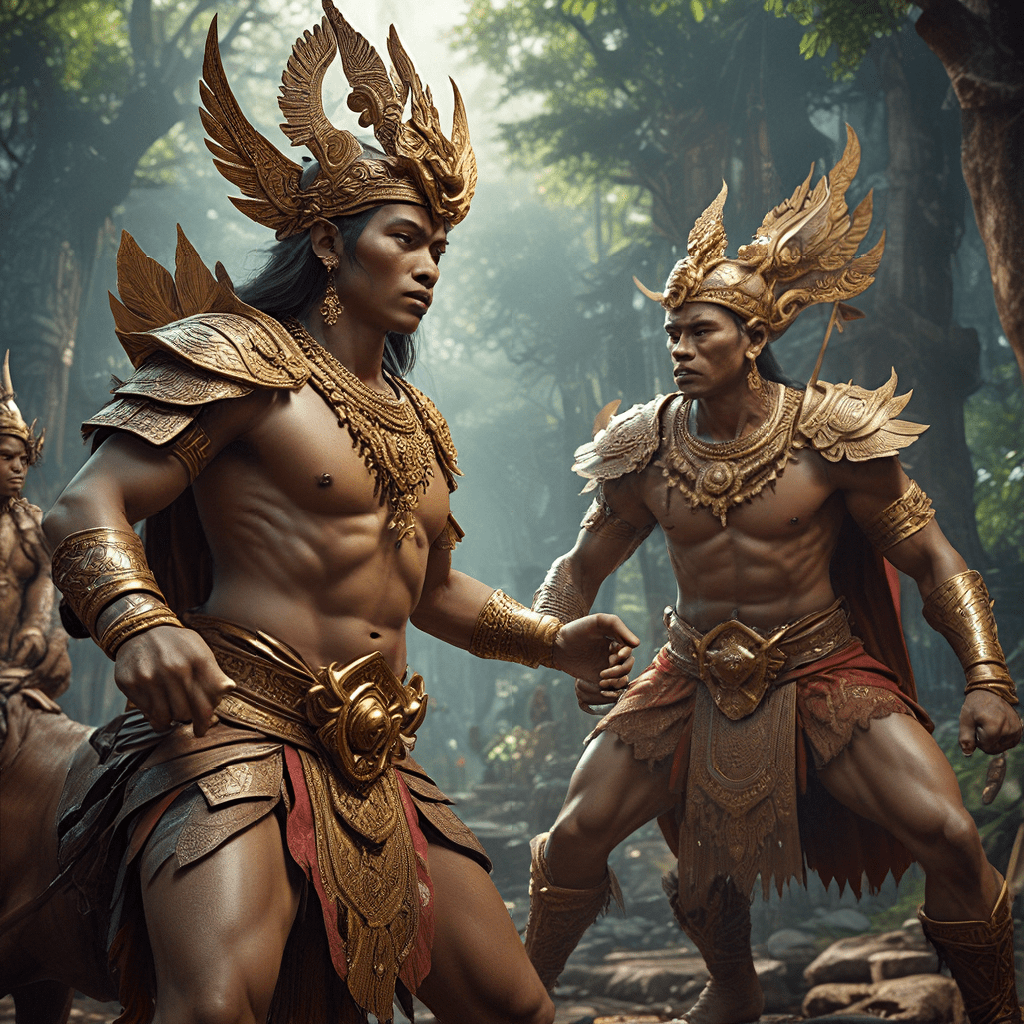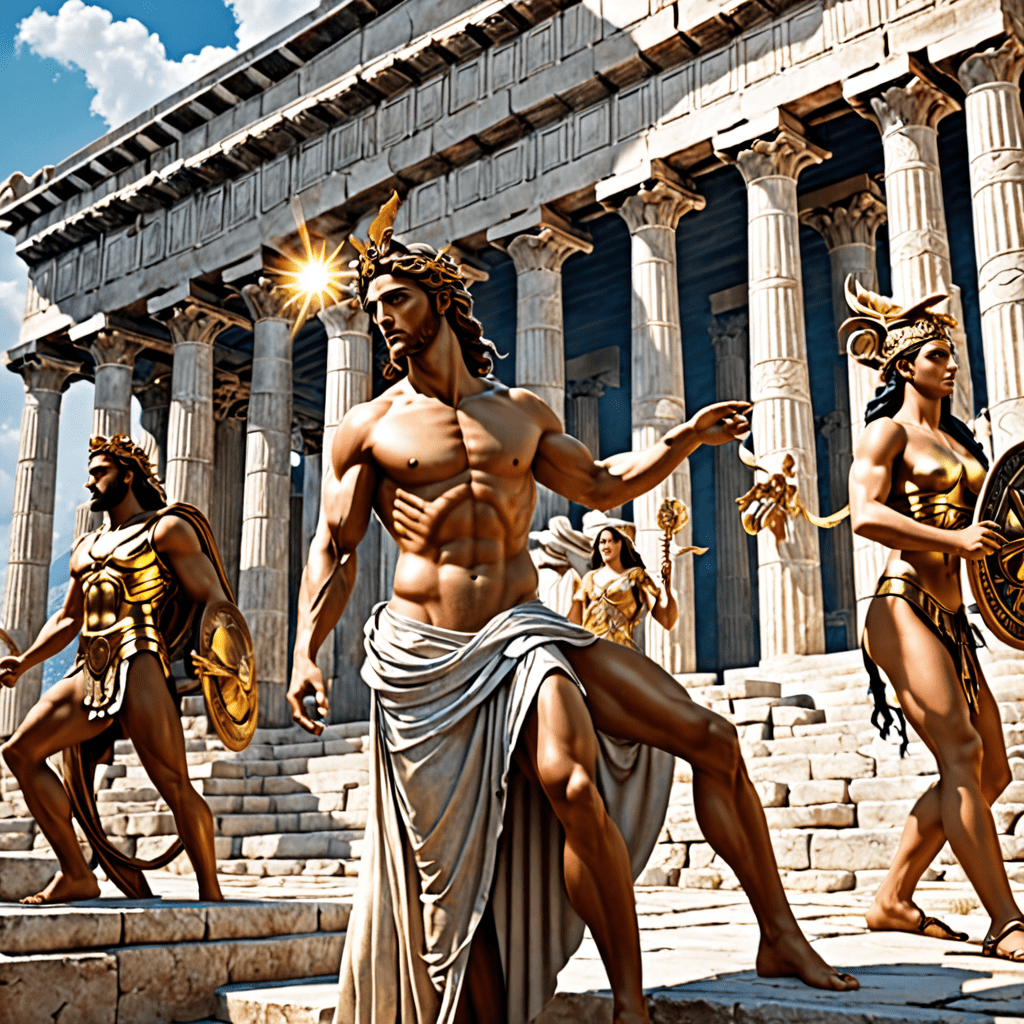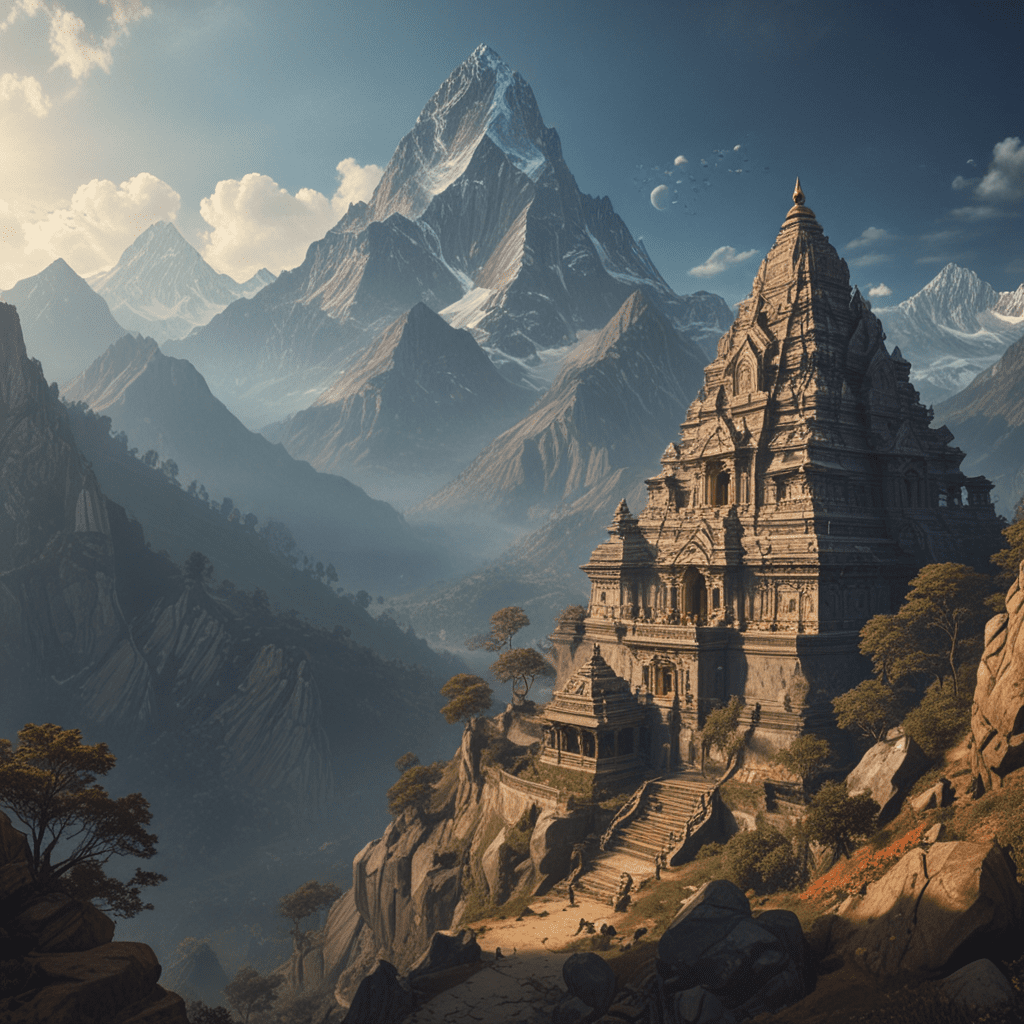Indonesian Mythology: Tales of Honor and Betrayal
Indonesia, a vast archipelago nation with thousands of islands, boasts a rich and vibrant cultural heritage, deeply intertwined with its ancient mythology. These myths, handed down through generations, offer a window into the Indonesian soul, revealing beliefs, values, and a profound connection to the natural world. More than just captivating stories, Indonesian mythology serves as a guide to life, reflecting the complexities of human nature, exploring themes of honor, betrayal, and the constant struggle between good and evil.
The Cosmic Dance: Creation Myths and the Origins of Humanity
Indonesian creation myths, like those of many cultures, seek to explain the origins of the world and its inhabitants. One prominent story tells of the primordial sea, Kala, and the sky god, Batara Guru, who were locked in a cosmic dance of creation and destruction. From their union, islands, mountains, and the first humans emerged. These myths often feature divine beings shaping the land, planting seeds for life, and imbuing nature with a sacred presence. The act of creation is intertwined with the concept of balance, emphasizing the delicate harmony between the physical and spiritual realms.
Guardians of the Realm: Deities and Supernatural Beings
The Indonesian pantheon is populated by a diverse cast of deities, spirits, and supernatural beings, each with their own unique roles and domains.
- Batara Guru, the supreme god, resides in the heavens and embodies power and justice.
- Dewi Sri, the goddess of rice and agriculture, is revered for her bounty and fertility, reflecting the importance of rice cultivation in Indonesian society.
- Naga, mythical serpent-like creatures, often associated with water and wisdom, are both feared and respected.
- Jin, mischievous spirits who inhabit the natural world, can be both helpful and harmful, depending on their intentions.
These beings often interact with humans, shaping their destinies and offering guidance. The belief in the interconnectedness between the human and divine worlds is central to Indonesian mythology, highlighting the importance of respect and reverence for the sacred.
The Power of the Word: Myths of Storytelling and Oral Tradition
Storytelling plays a vital role in Indonesian culture. Myths are not just entertainment; they are a means of preserving history, transmitting cultural values, and connecting generations. Tales are passed down orally, often accompanied by intricate dances, music, and elaborate costumes, enhancing the impact of the narrative.
These stories are not just about the distant past; they are woven into the fabric of daily life. The act of storytelling serves as a reminder of the enduring legacy of ancestors and the importance of maintaining a connection to the spiritual realm.
The Weight of Honor: Stories of Valour, Loyalty, and Duty
Indonesian mythology places a high value on honor, loyalty, and righteous conduct. Many tales celebrate heroes who embody these virtues, displaying unwavering courage in the face of adversity, demonstrating unwavering loyalty to their families and communities, and fulfilling their duty with unwavering dedication.
These stories often feature epic battles between good and evil, where the heroes emerge victorious, upholding the principles of justice and righteousness. These narratives serve as moral compasses, encouraging individuals to strive for noble qualities and uphold ethical standards in their lives.
Betrayals and Their Consequences: Exploring the Dark Side of Humanity
While Indonesian mythology celebrates the virtues of honor and loyalty, it also acknowledges the dark side of human nature. Betrayal, greed, and jealousy are recurring themes, often leading to tragic consequences. The stories serve as cautionary tales, emphasizing the importance of choosing the right path and avoiding actions that could lead to suffering and destruction.
By exploring the consequences of betrayal, these myths encourage reflection on the importance of trust, honesty, and the potential for both good and evil to exist within every human heart.
The Role of Spirits and Ancestors: Connecting to the Divine and the Past
In Indonesian mythology, spirits and ancestors play a vital role, acting as intermediaries between the human world and the divine. The belief in the spirit world is deeply ingrained in Indonesian culture, shaping everything from daily rituals to communal celebrations.
- Ancestors, revered as protectors and guides, are believed to hold influence over the living. They are honored through offerings, prayers, and special ceremonies, ensuring their continued blessings.
- Spirits, residing in the natural world, can be benevolent or malevolent. It is important to treat them with respect and avoid angering them, as they can influence events in the physical world.
- Rituals play a crucial role in ensuring harmony between the human and spirit realms. These ceremonies, often involving offerings, prayers, and dances, seek to appease the spirits and gain their favor.
The belief in the spirit world underscores the importance of ancestral wisdom, respect for the natural world, and the interconnectedness of all beings. It emphasizes the importance of honoring the past, seeking guidance from the unseen, and maintaining a harmonious relationship with the spiritual realm.
Mythological Themes of Transformation and Rebirth
Transformation and rebirth are recurring themes in Indonesian mythology, reflecting the cyclical nature of life and the constant process of change. Many tales feature characters undergoing profound transformations, often through trials and tribulations.
- The story of Sang Hyang Wenang, the god of creation, tells of his journey from a humble rice farmer to a powerful deity, symbolizing the potential for growth and transformation in all beings.
- The legend of the goddess Dewi Sri emphasizes the importance of nurturing and growth, symbolizing the renewal of life through the cycle of planting, harvesting, and rebirth.
- The myth of the mystical bird Garuda depicts its transformation from a simple bird to a powerful creature with divine powers, signifying the potential for personal growth and the transcendence of limitations.
These tales serve as reminders of the inherent potential for change within each individual, encouraging personal growth, resilience, and the ability to overcome obstacles. They remind us that life is a journey of continuous learning, adaptation, and renewal.
The Influence of Indonesian Mythology on Literature and Art
Indonesian mythology has profoundly influenced the country's literary and artistic traditions, shaping the themes, characters, and aesthetics of these art forms.
- Literature is filled with stories inspired by ancient myths, reflecting the values, beliefs, and cultural heritage of the people. From epic poems to folktales, Indonesian literature is a treasure trove of mythological narratives.
- Traditional theater, like Wayang Kulit (shadow puppet play), draws heavily on mythology, using puppets representing gods, spirits, and legendary heroes. These performances are not just entertainment but serve as a means of transmitting cultural knowledge, moral teachings, and spiritual beliefs.
- Visual arts, including painting, sculpture, and textiles, often feature mythical creatures, deities, and scenes from legendary tales. These artworks showcase the imaginative power of Indonesian artists and their deep connection to their mythological heritage.
Indonesian mythology is a vibrant source of inspiration for artists, writers, and performers, contributing to the rich tapestry of the country's cultural expression. It continues to influence contemporary works, reflecting the enduring power of ancient stories to inspire creativity and shape artistic expression.
Modern Interpretations and Retellings of Ancient Tales
Indonesian mythology is not just a relic of the past; it continues to influence contemporary culture, with modern interpretations and retellings breathing new life into ancient tales.
- Contemporary writers explore themes of mythology in their works, adapting ancient stories to modern contexts, exploring new perspectives, and addressing contemporary concerns.
- Filmmakers draw inspiration from mythology, creating visually stunning epics that capture the imaginations of audiences, blending traditional storytelling with modern cinematic techniques.
- Artists engage with the visual language of mythology, reinterpreting traditional iconography and incorporating elements of ancient tales into contemporary art forms.
These modern interpretations demonstrate the enduring relevance of Indonesian mythology, showing its ability to resonate with audiences across generations and connect to contemporary issues. They highlight the transformative power of ancient stories to inspire creativity, challenge assumptions, and foster dialogue about the human condition.
The Enduring Legacy of Indonesian Mythology: A Tapestry of Culture and Belief
Indonesian mythology is a vibrant tapestry woven from ancient beliefs, values, and stories, reflecting the diverse cultural heritage of the archipelago. These myths are not just entertaining tales; they serve as a guide to life, offering insights into the human condition, exploring themes of honor, betrayal, and the constant struggle between good and evil.
- Indonesian mythology provides a window into the rich cultural heritage of the nation, offering valuable insights into the beliefs, values, and traditions of the people.
- These stories continue to inspire contemporary artists, writers, and filmmakers, demonstrating their enduring relevance and influence on the cultural landscape.
- By understanding Indonesian mythology, we gain a deeper appreciation for the beauty, complexity, and enduring power of its cultural heritage.
As we delve into these ancient tales, we gain a deeper understanding of the Indonesian soul, discovering the enduring values and beliefs that continue to shape the nation's identity. Indonesian mythology is a treasure trove of wisdom, inspiration, and cultural significance, offering a glimpse into the extraordinary world of beliefs and traditions that continue to enrich Indonesian culture.
FAQ
Q: What are some examples of Indonesian myths about honor?
A: The tale of Gatotkaca, a powerful warrior, exemplifies honor, loyalty, and courage. He sacrifices himself to protect his family and kingdom, showcasing the ultimate act of selflessness.
Q: How does Indonesian mythology reflect the importance of nature?
A: Many myths feature deities and spirits associated with natural elements like the sea, mountains, and forests. This reflects the deep respect and reverence for the environment that is ingrained in Indonesian culture.
Q: How does Indonesian mythology connect the human world with the spirit world?
A: Rituals, offerings, and ceremonies are vital in connecting the living with the spirits and ancestors. These practices ensure harmony and seek guidance from the spiritual realm.
Q: What are some examples of modern interpretations of Indonesian mythology?
A: Contemporary authors like Pramoedya Ananta Toer and contemporary filmmakers like Garin Nugroho have incorporated elements of Indonesian mythology into their works, showcasing the enduring relevance of these ancient tales.
Q: How does Indonesian mythology continue to shape the country's cultural identity?
A: Indonesian mythology serves as a source of inspiration, shaping art forms, literature, and traditional practices. It fosters a sense of shared heritage and connects generations through storytelling and cultural expression.



